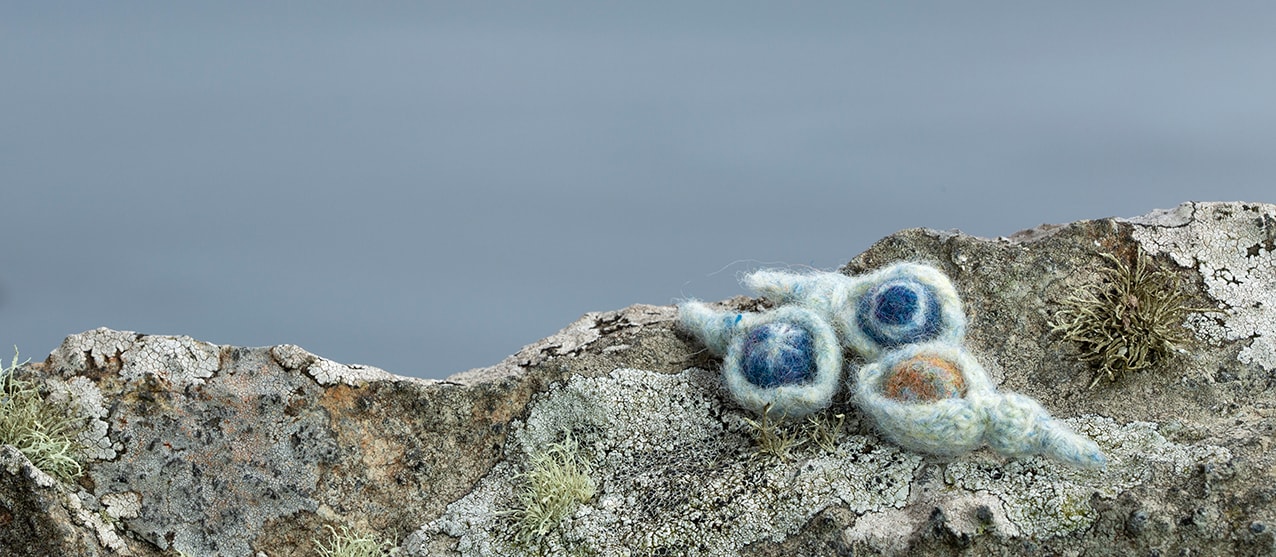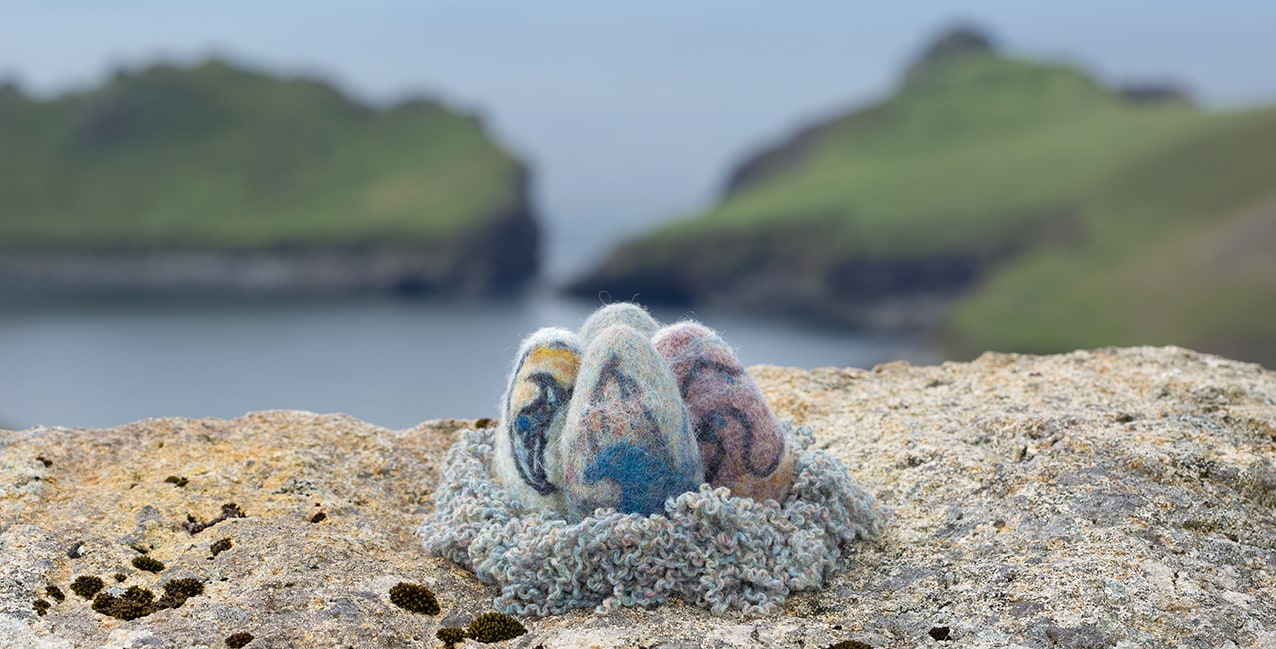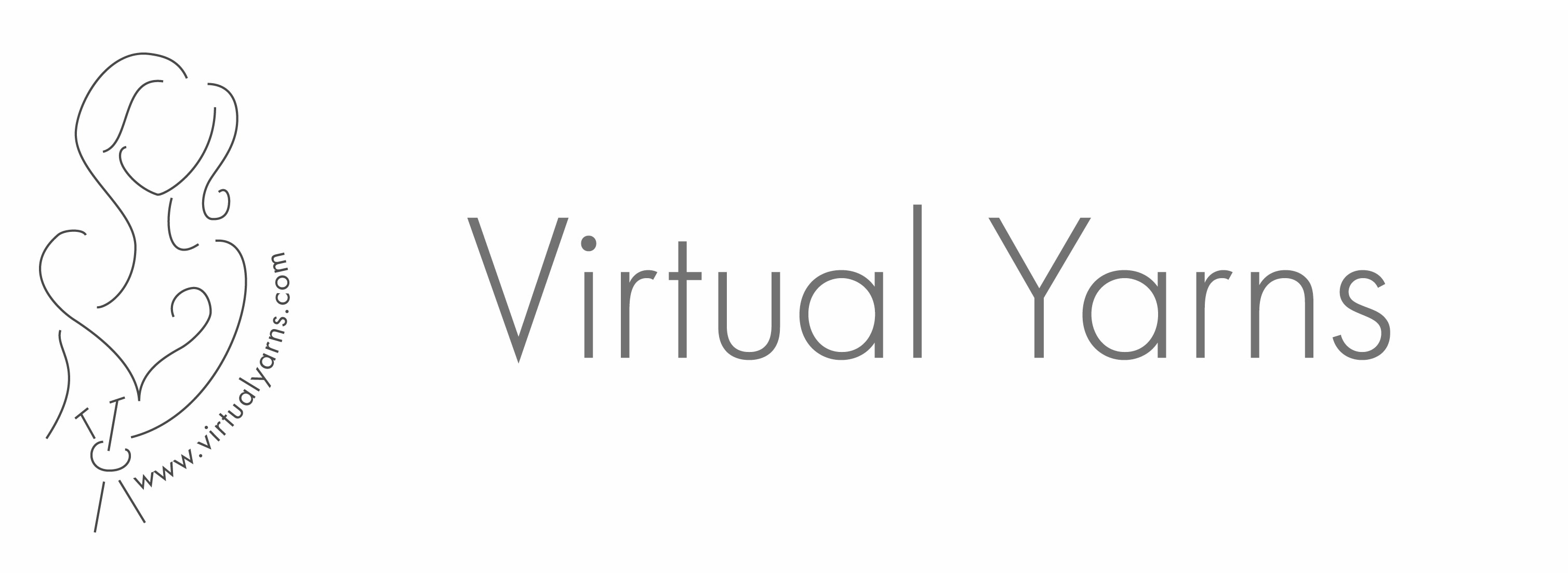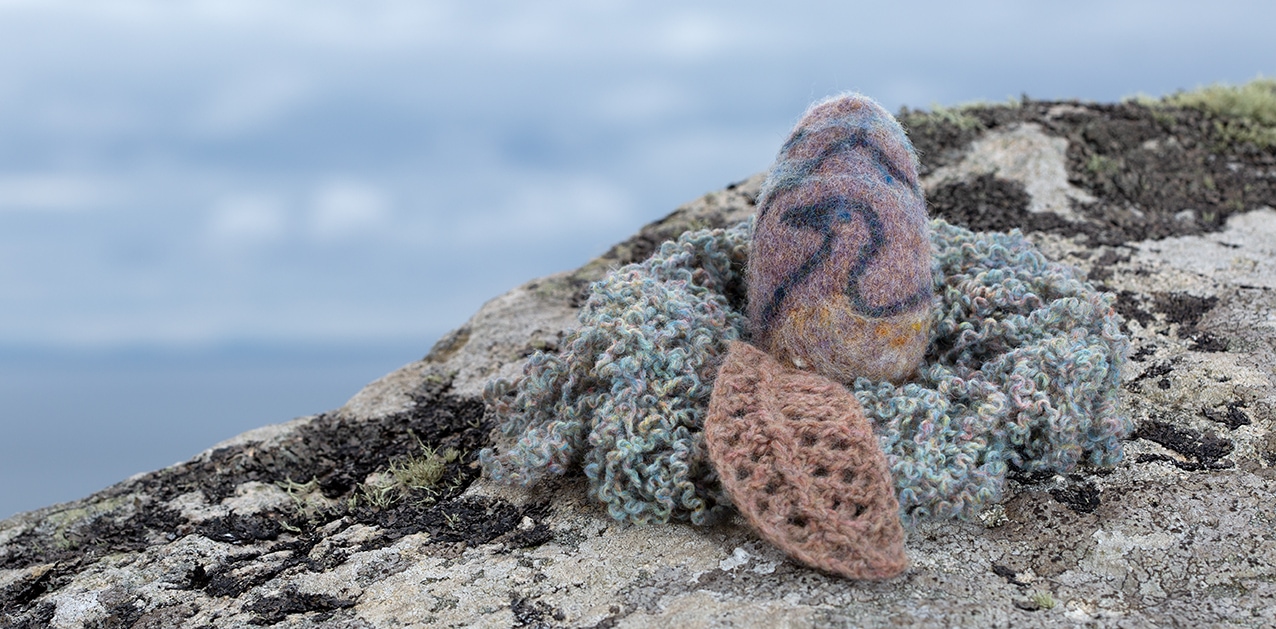
The House Of Feathers
Nothing to my mind represents the beginning of life on this earth more perfectly than an egg. In early Spring every crevice and shelf on the stacs and cliffs of the archipelago contain the eggs of around one million seabirds. For the people of Hiort, eggs were a vital part of survival and they risked their lives to harvest them by being lowered from the clifftops on ropes or rowing to the outlying stacs and climbing the sheer cliffs. Calum Macdonald recounted how it was every young boy’s ambition to visit all the islands and stacs to take part in this extremely hazardous operation. Landing places were literally a footsized outcrop of rock which had to be leapt at barefoot from the sgoth (Hebridean wooden boat) in a heaving sea. Girls also took part and looked forward to a stay on Boreray. For them, they had the relative safety of leaping from the boat into the arms of an anchored man before they climbed upwards of a thousand feet to the little dwellings and green pastures at the top.
Sailing around Boreray and the stacs is an experience like no other. This is the domain of the birds and the sounds and sights of thousands of them on every ledge and wheeling in the sky around you is unforgettable. Though I am well-used to heaving seas and high cliffs I still found it unimaginably awe-inspiring and humbling that through sheer necessity, people became adept at traversing places that are on the very edge of human possibility.
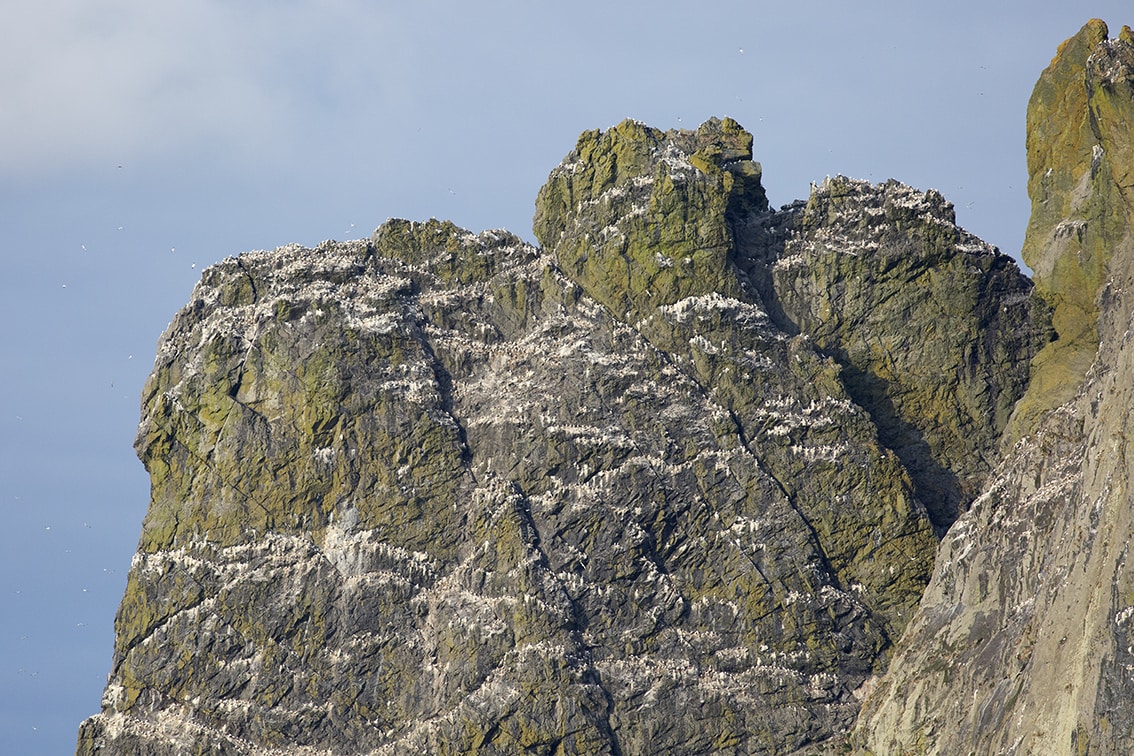
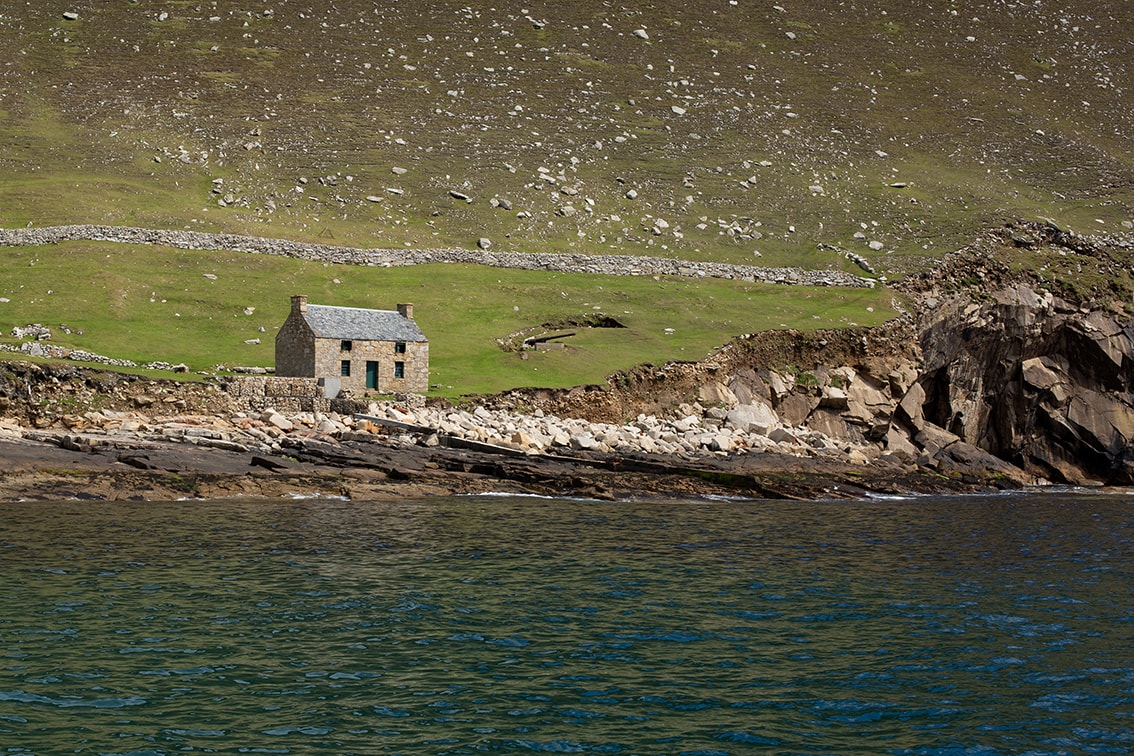
Seabirds were not only a vital food source but a valuable commodity to be bartered. Feathers were of huge economic importance and from the 18th Century onwards they were harvested and sorted for export, constituting a major part of the rent paid to the landlord. By the late 18th Century Taigh na Iteagan (The House of Feathers) or The Feather Store, as it is commonly referred to now, was the largest and most modern building on Hirta.
During this harvest time the islanders frequently looked like birds themselves, covered from head to foot in plumage from their toil. The women also wore slippers made from the cushioned feathered skins of gannet necks. This spectacular concept of flight-footed, feathered women poured fuel on my imaginative fires, and so I knitted a few feather ideas which I will expand on further.
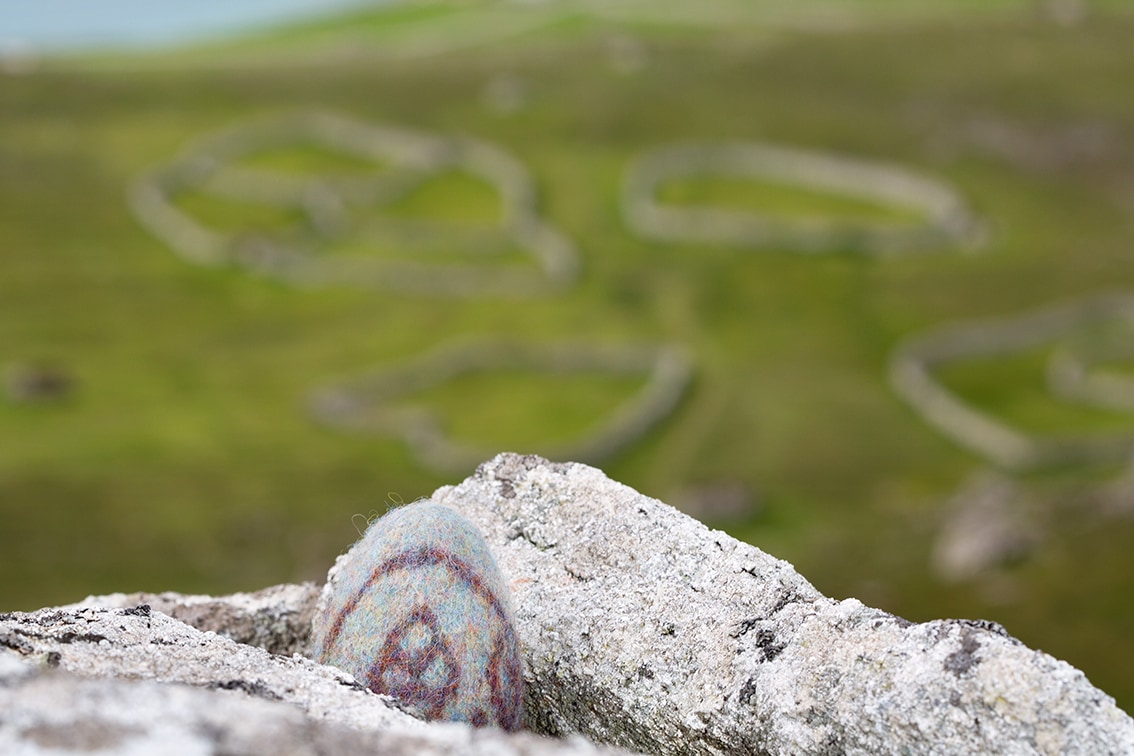
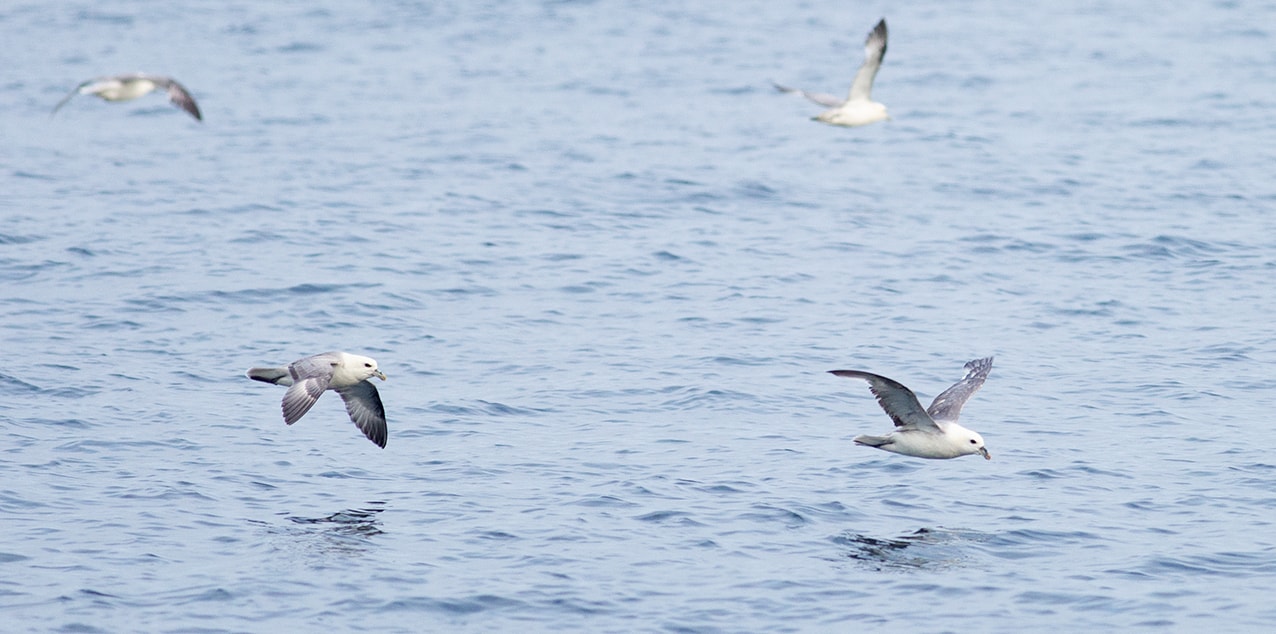
As the perfect beginning to this project, I have begun with the symbol of the egg. I knitted these in my Hebridean 2 Ply in Solan Goose, Driftwood and Pebble Beach and shaped them to fit perfectly in my hands. I then very quickly embroidered them with abstract images of birds, feathers, stacs and the wonderful arcs and shapes of the stone structures around the Village Bay. I felted them so that the images became faint, as though they were shrouded in the mist that frequently swirls around Hiort. They will serve me as initial tokens and I will look at them occasionally to see if they will bring forth some further directions.
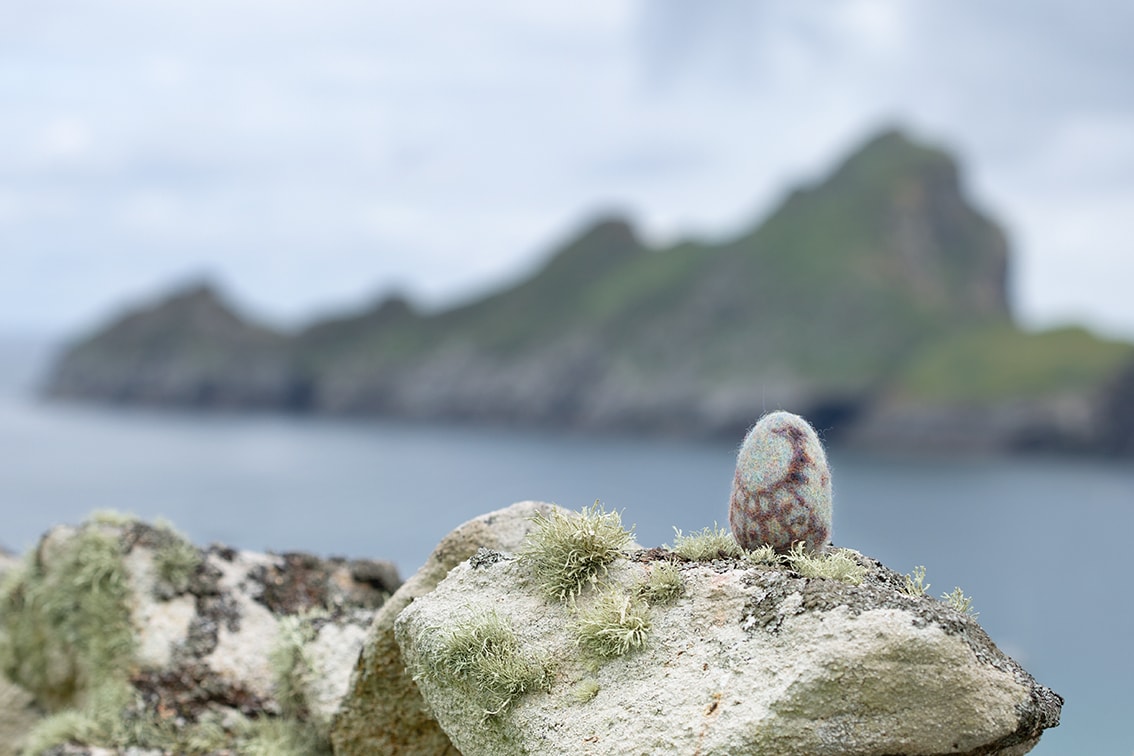
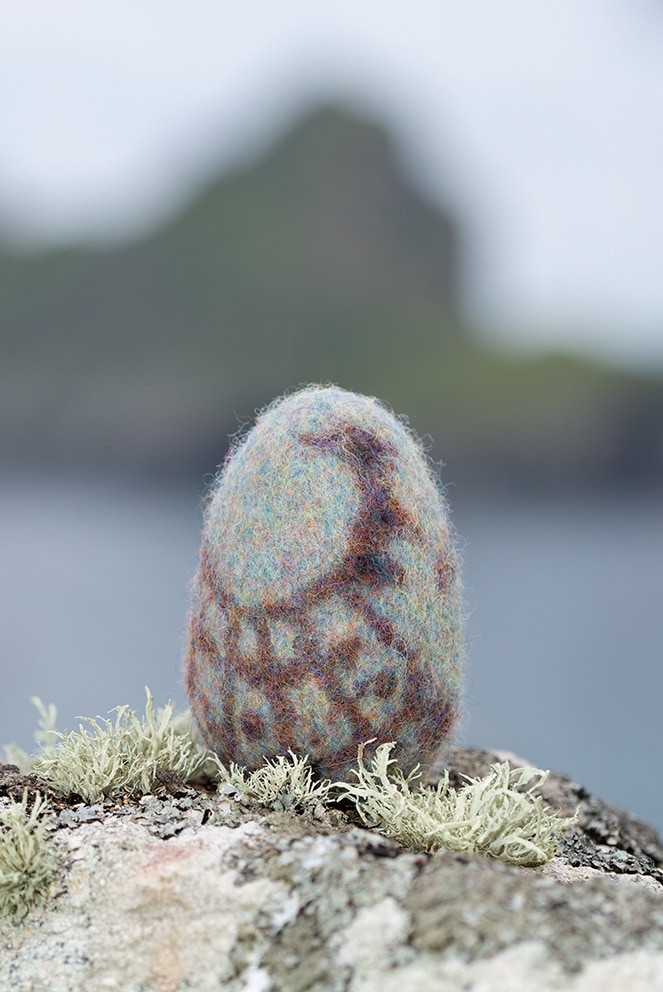
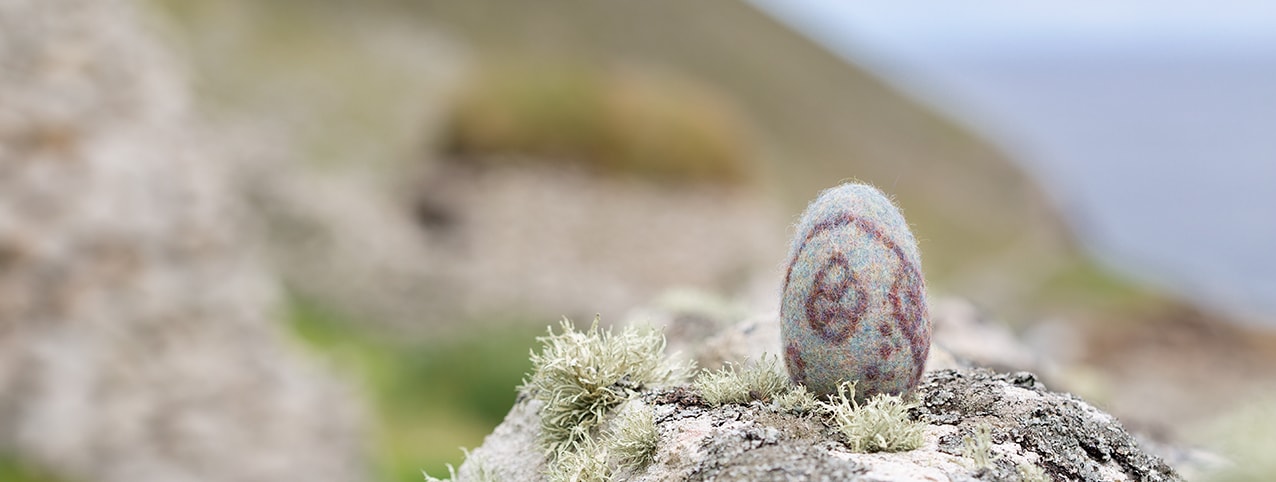
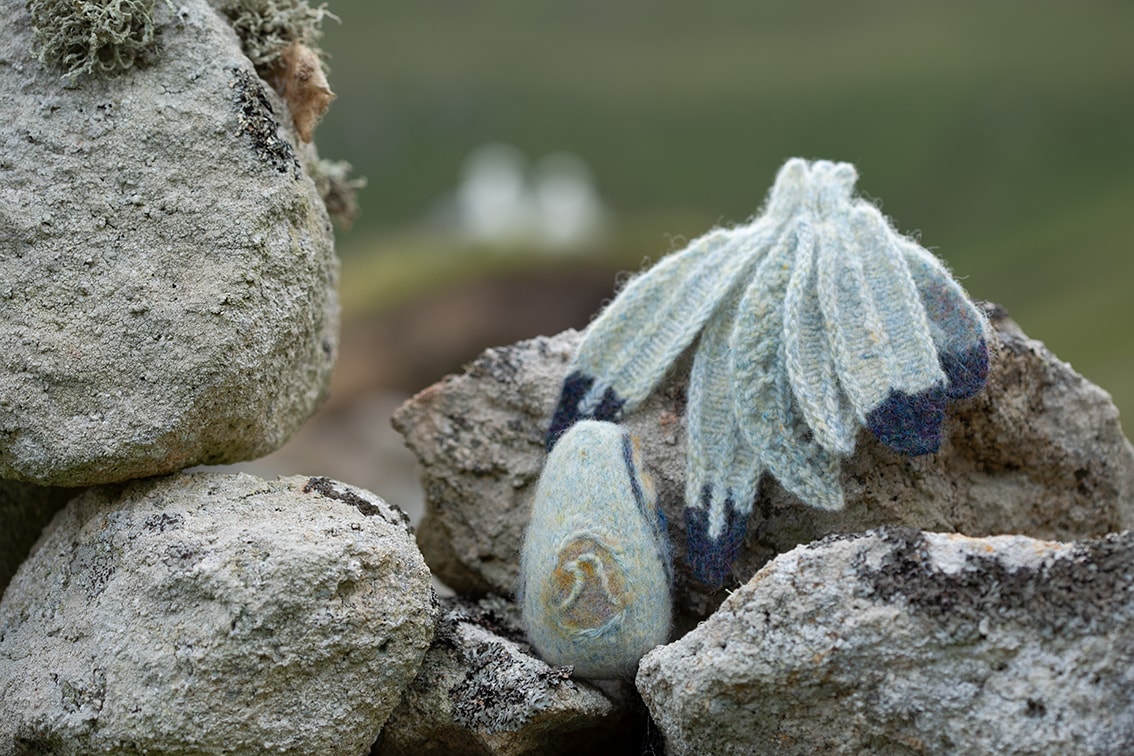
After centuries of being hunted, the fulmars now lay claim to the cleits where they breed undisturbed by man.
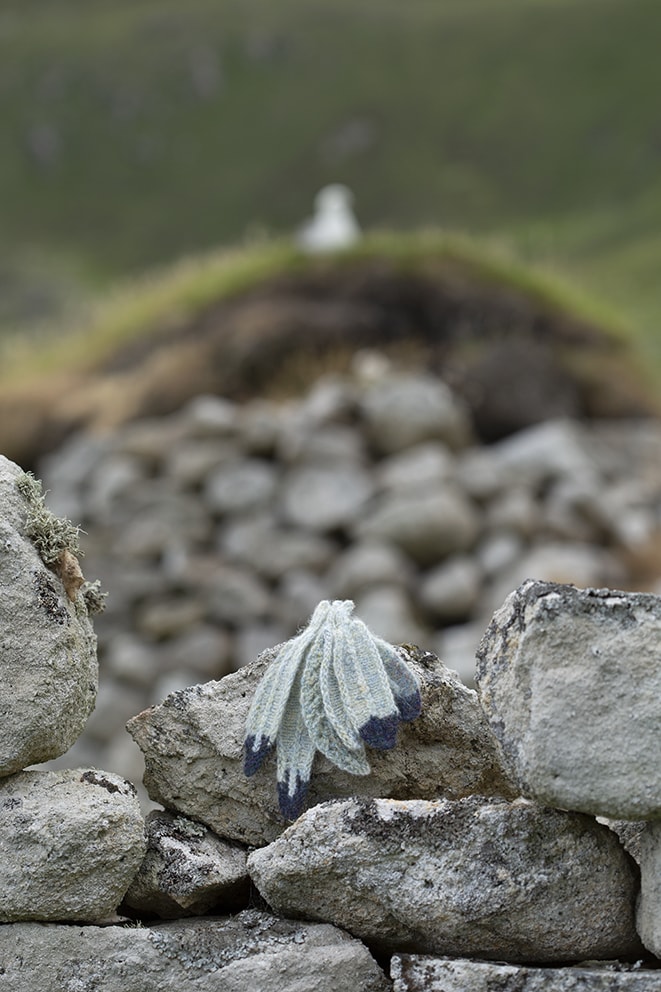
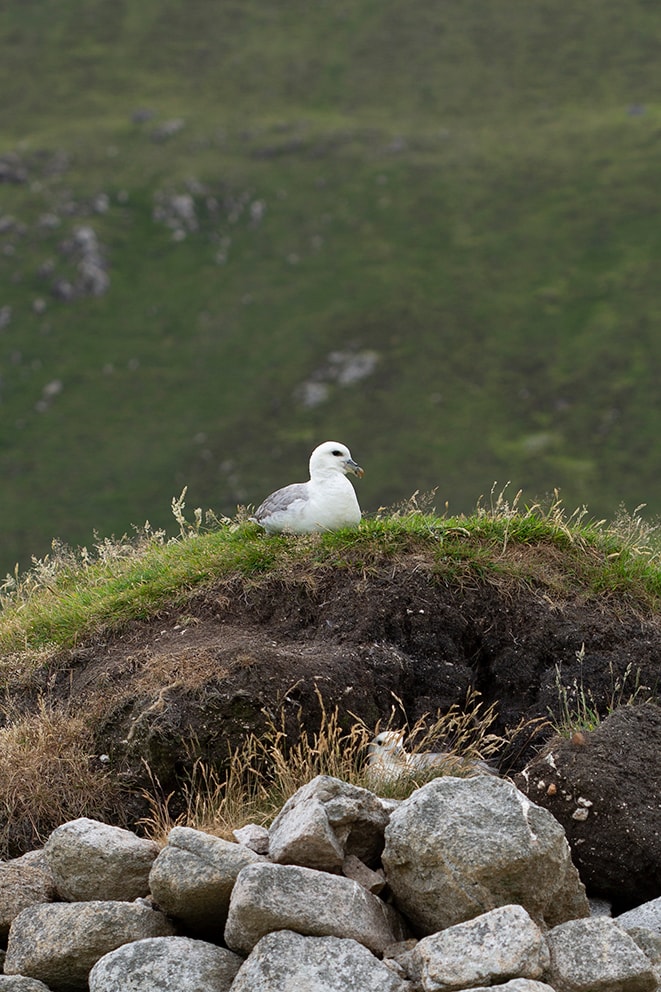
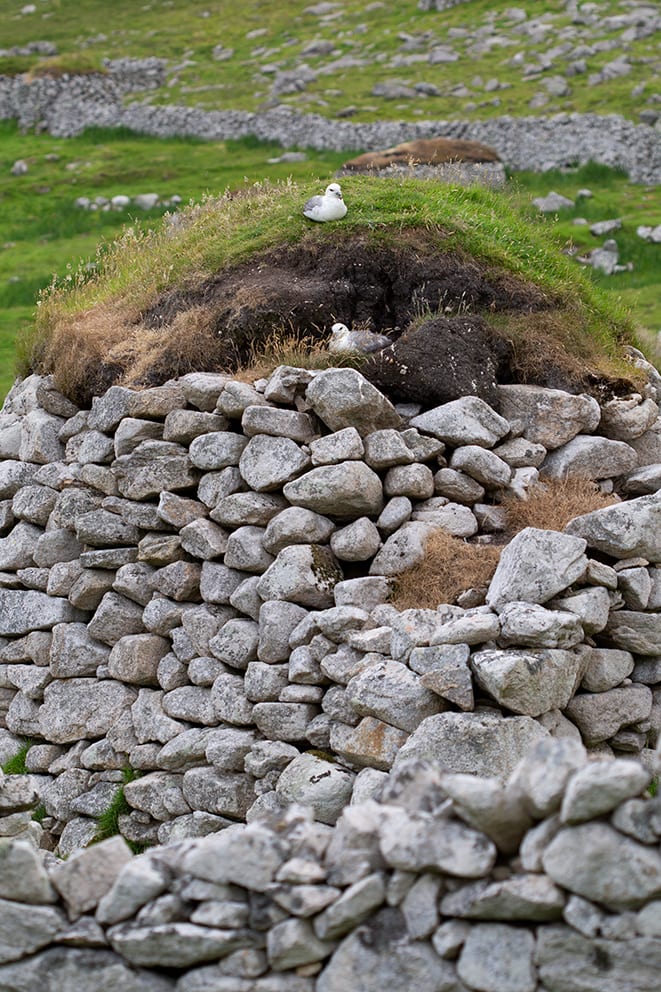
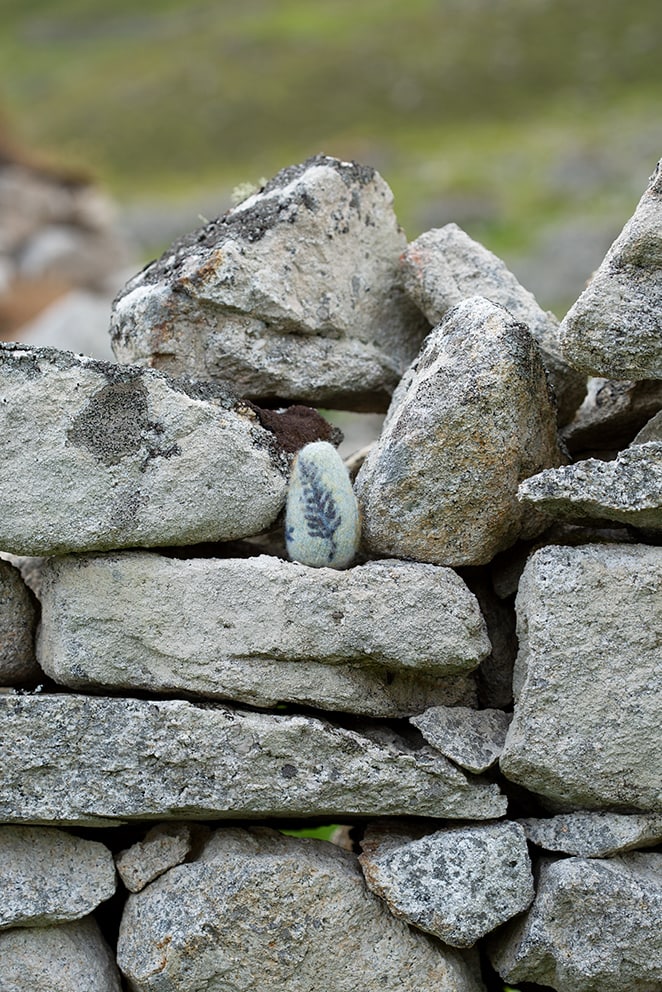
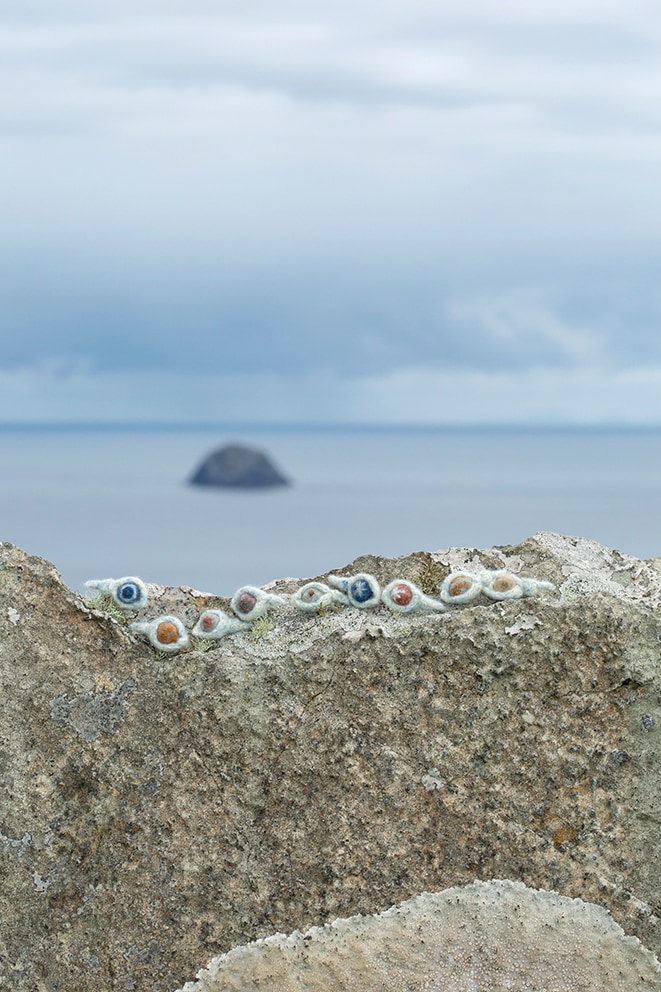
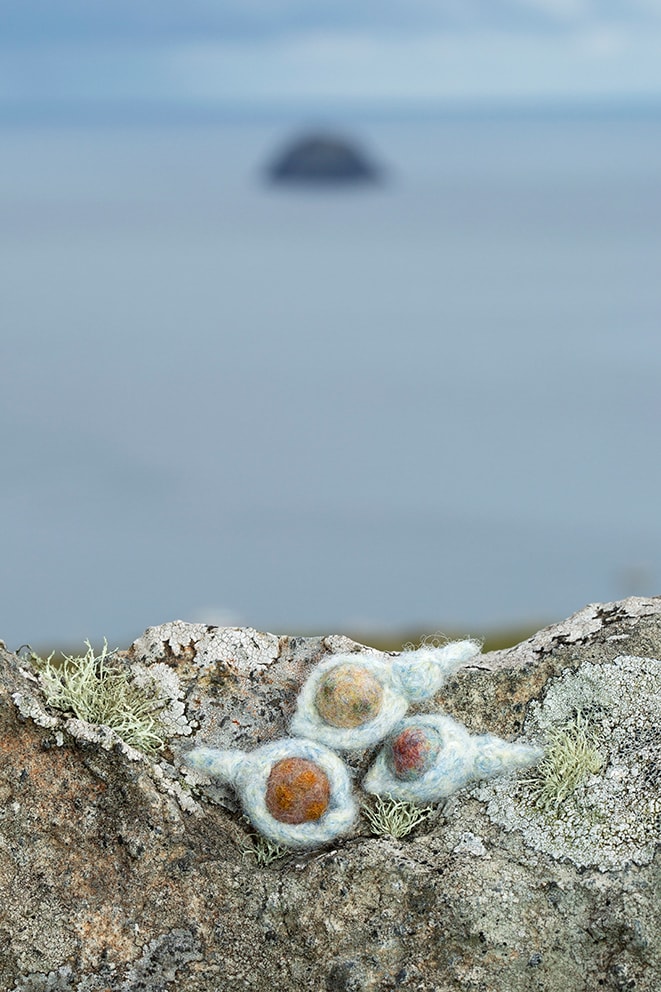
Healing wells are an important feature of Hebridean culture, with some wells even reputed to heal specific diseases. There are seven notable wells on Hiort and the most famous of these is Tobar nam Buadh, translated as The Well of Virtues. It is located in the Gleann Mòr in the North West of the main island. The water from this well was considered to have such great healing qualities that invalids from the other Outer Hebridean islands made their way over the ocean in the hope of being cured. The belief that spirits resided in the well continued into the 19th Century and it was necessary for those who drank the water to appease the guardian spirit by leaving a small gift. This applied equally to natives stopping at the well on the way to harvest eggs and birds on the northern cliffs as much as it did to visitors in search of a cure. Pebbles, shells and buttons were considered appropriate offerings. The islanders were more likely to leave shells and pebbles found on the shore and so I knitted and felted nine whelk shells, in each of which I enclosed an embroidered felted bead in honour of the spirit of Tobar nam Buadh.
